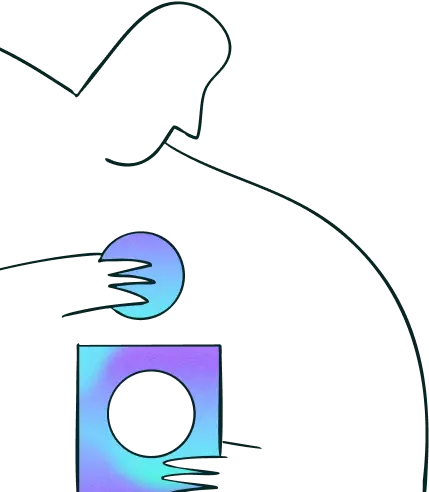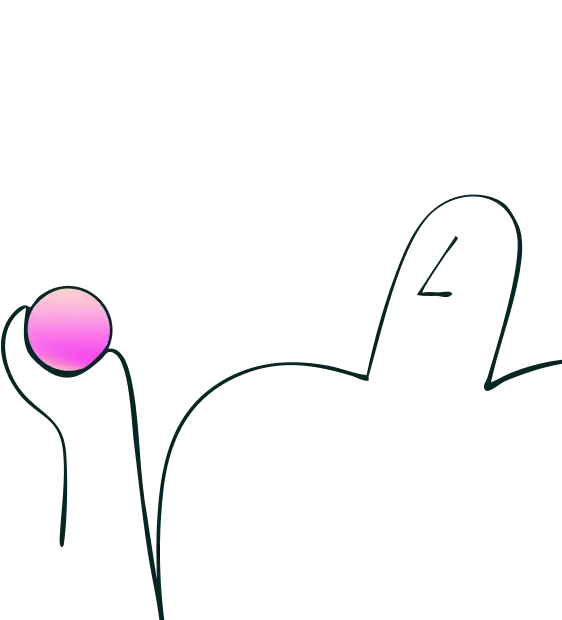16 Jun 2025
|1 min
UX research as a team of one
Explore the challenges and strategies of conducting UX research as a team of one at a startup with Dale Husband.

Taking on the role of a solo UX researcher can feel like diving into uncharted waters. It demands versatility, resilience, and a knack for wearing multiple hats.
Dale Husband, a UX researcher and the host of the UXR Minds podcast, knows the intricacies of this role well. We met with Dale to chat about his experience working as a solo researcher at a startup.
Dale discusses how he found himself in the industry, offers advice on transitioning careers, and provides a 30/60/90-day plan for starting with a new client.
How did you become a UX researcher?
Dale's journey into UX research reflects a diverse background and a passion for understanding users' needs. He initially studied tech hardware, then moved into a customer experience research and support role, where he worked on a Microsoft Office 365 cloud project. His interaction with users during this time sparked an interest in improving user experiences.
“I loved the interaction with customers, with users, helping them set up a cloud project or set up their licenses and help them through the whole journey.”
After moving to Italy, he was introduced to UX through connections and decided to pursue it through self-learning. “I realized that UX was what I really wanted to do. It's where my passions lie,” shares Dale.
During this period, he also studied social psychology, which complemented his prior experiences and prepared him for UX research. Dale's approach involved self-learning, volunteering, and shadowing to bridge any skill gaps and understand user research methodologies better.
This combination of learning methods allowed him to transition smoothly into UX, eventually leading to freelancing and paid contract roles.
Elevate your research practice
Join over 320,000+ marketers, designers, researchers, and product leaders who use Lyssna to make data-driven decisions.
You've been working as a solo researcher at a start-up. How did you approach your first 30/60/90 days in the role?
Dale emphasizes the importance of setting clear priorities within a 30, 60, and 90-day framework. In the first 30 days, Dale focused on understanding the startup's existing knowledge about its users and their demographics, as well as the team's communication channels with users.
Moving into the 60-day mark, Dale identified potential research areas based on existing user data and product performance, while also building rapport with users through regular sessions.
By the 90-day milestone, Dale's picture of the product and user experience became clearer. He began to identify areas for improvement based on user feedback and was able to prioritize research projects accordingly.
Moving past 90 days, Dale shared that he started to actively work on projects and implement feedback from users. He emphasizes the importance of integrating feedback from stakeholders and collaborating with designers and product managers to implement actionable insights.
Do you have any tips for working as a solo UX researcher?
Working as a solo UX researcher or designer can feel isolating. To combat this, Dale talks about the importance of staying connected with your team: "Set up as many one-on-one sessions and group sessions with your colleagues in the product team or whatever fields you're working in. Make sure they're regular as well."
He also highlights the necessity of sharing your work: "Share what you're doing as much as possible.” For example, if you're in a remote team, share on Slack or the platform used by the company. He also suggests documenting everything you do – this way, you have something to share, and it can help to refresh your memory during meetings.
Dale further advises against personal isolation: "Because if you're working a lot on your own, and if you're also isolated in your personal life, it can affect you mentally.” Remember to speak, share, and keep yourself connected with friends and family. These strategies have helped Dale maintain a balanced and productive solo-working experience.
What are you working on next?
At the moment, Dale is between jobs, having recently completed a role as a UX researcher for a satellite imaging company. Now, he's focusing on volunteer work with the Clinical UX Association, which monitors UX standards in healthcare. Healthcare isn't a field Dale has worked in before, and he's fascinated by this new sector.
"Currently, I'm working on a few white paper research studies, which is really interesting. I’m doing some in-depth research on different practices within the healthcare system and patient experiences.”
In addition to his volunteer work, Dale is dedicating time to his UXR Minds podcast, which features "tons of really cool, experienced, and fascinating guests." This period between work has allowed him to explore new areas and continue contributing to the UX community.
Your go-to user research platform
The best teams use Lyssna so they can deeply understand their audience and move in the right direction — faster.
Do you have any advice for people transitioning into a career as a UX researcher?
Dale shares valuable advice for those transitioning into the UX field: "First of all, I would say network as much as possible. This was a huge catalyst for me in entering the field and finding my place.”
“Networking allows you to have access to hundreds, if not thousands, of mentors."
He emphasizes the importance of approaching networking with an open mind and not expecting immediate returns: "Don't go into it expecting to be mentored. I view it as a way to network and get to know people in the field."
Dale also encourages volunteering, as it "gives you that hands-on experience and allows you to put into practice what you're learning. It also gives you access to mentors."
“You learn how to communicate your research results. For example, in presentations, you're able to learn how to hand over work and perform a handover to engineers. All these things, you wouldn't get otherwise, if you were just working on your own or working on fake projects.”
You may also like these articles


Try for free today
Join over 320,000+ marketers, designers, researchers, and product leaders who use Lyssna to make data-driven decisions.
No credit card required






